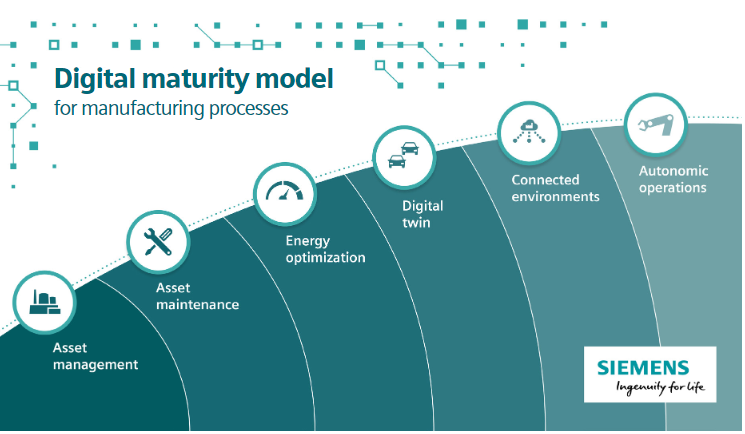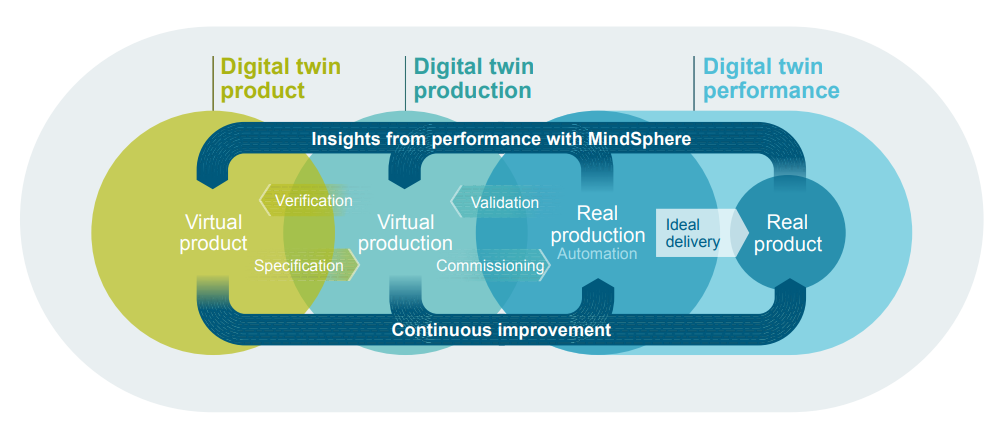
Building an IIoT strategy for electronics manufacturing machinery
The Industrial Internet of Things (IIoT) will be the biggest driver of electronics manufacturing productivity and growth in the next decade. IIoT merges information technology (IT) and operational technology (OT) to collect, analyze and enable electronics manufacturers to act on data, resulting in a boost in operational efficiency and production. As manufacturers mature in their digitalization strategies, they can scale the capture and analysis of data from across the product lifecycle (including design, engineering, and manufacturing). Each one of the use cases below can build to the next, enabling manufacturers to adopt a scaled strategy.

Leveraging condition monitoring and asset performance management for optimal electronics manufacturing
Manufacturers can use asset monitoring to set a baseline for performance and adjust production lines for optimization, launching their journey into building a robust digitalization strategy. They can use asset monitoring to set a baseline for performance and adjust production lines for optimization, launching their journey into building a robust digitalization strategy.
1. Condition monitoring – Electronics machinery manufacturers can connect assets to a central IIoT platform and monitor specific equipment parameters such as temperature to track the operating conditions of all assets. With this data in hand, organizations can maximize the uptime of critical assets, proactively identify production line issues and gain transparency into asset health.
2. Asset performance management – Leveraging data from asset monitoring, IIoT-powered asset performance applications generate automated alerts when machines move outside optimal operating conditions and target KPIs. Manufacturers can quickly react using real-time alerts and continuously adjust machines for performance improvements using real collected data.
Reducing electronics machinery maintenance costs with data-based predictive maintenance

Manufacturers can significantly reduce machinery breakdowns and unplanned maintenance with data-backed predictive maintenance plans. According to the U.S. Department of Energy’s Operations & Maintenance Best Practices Guide, organizations can reduce asset breakdowns by 70% by implementing predictive maintenance. Avoiding 7 out of 10 unplanned breakdowns can significantly impact machine uptime and production output.
3. Predictive maintenance – Within continuous collection and analysis of machinery health and performance data, electronics manufacturers can start identifying critical thresholds for a part, indicating service needs or replacement. Electronics manufacturers can leverage this information to only service machines when needed, reduce unscheduled downtime by replacing parts before failures and prolong machine life with proactive maintenance.
4. New revenue channels – With remote monitoring of a machine’s condition, IIoT enables electronics industry machine builders to offer a new service to customers. Organizations can provide maintenance as a service and increase customer satisfaction with a machine uptime guarantee.
Reduce electronics machinery energy consumption with insights for manufacturing optimization
Increasing production while prioritizing environmental sustainability is at the top of many manufacturers’ lists of challenges. Finding ways to continue increasing throughput while also reducing energy consumption requires understanding how individual machines consume energy.
5. Energy management – By tracking and managing the energy usage of plants and machines, manufacturers can identify where to reduce consumption. Manufacturers can use data to understand how individual machines contribute to overall energy consumption. They can then find ways to reduce excessively high energy bills, identify peaks or dips in energy usage, discover nonpeak energy times and improve environmental sustainability.
Continuous improvement using a product, production and performance digital twin
A closed-loop digital twin encompasses product, production and performance. Manufacturers with insight into these areas can continuously improve and optimize.

6. Digital twin of performance – By monitoring the physical performance of the product line and product, manufacturers can use the data to adjust production, improve product design and enhance virtual models. Manufacturers can quickly improve the next iteration of the product with real-time performance feedback, boosting quality and time-to-market with immediate changes.
Advanced integration with suppliers and unlocking new business models
Fully integrated IIoT also helps electronics equipment manufacturers manage supplies and inventory at all locations and unlock new business models.
7. Inventory, warehouse and supply chain management – Managing supplies and inventory at all manufacturing locations enables organizations to optimize space and minimize costs with just-in-time inventory, pinpoint assets and equipment with location-tracking sensors and establish better relationships with suppliers.
8. New business model – With new technology on machinery, products can become a service, enabling organizations to track machine usage in real-time. Customers who cannot afford machinery can now lease it, create predictable revenue streams and sell outcomes instead of products.
With an IIoT foundation, manufacturers can continue to build value into the strategy by incorporating non-physical assets such as CRMs. They are also more able to evolve with technological advances adoptions such as artificial intelligence, virtual reality, and augmented reality.
Learn more about building an IIoT strategy in electronics machine manufacturing. Download the ebook today.

Don’t hesitate to contact Thanh for advice on automation solutions for CAD / CAM / CAE / PLM / ERP / IT systems exclusively for SMEs.
Luu Phan Thanh (Tyler) Solutions Consultant at PLM Ecosystem Mobile +84 976 099 099
Web www.plmes.io Email tyler.luu@plmes.io
